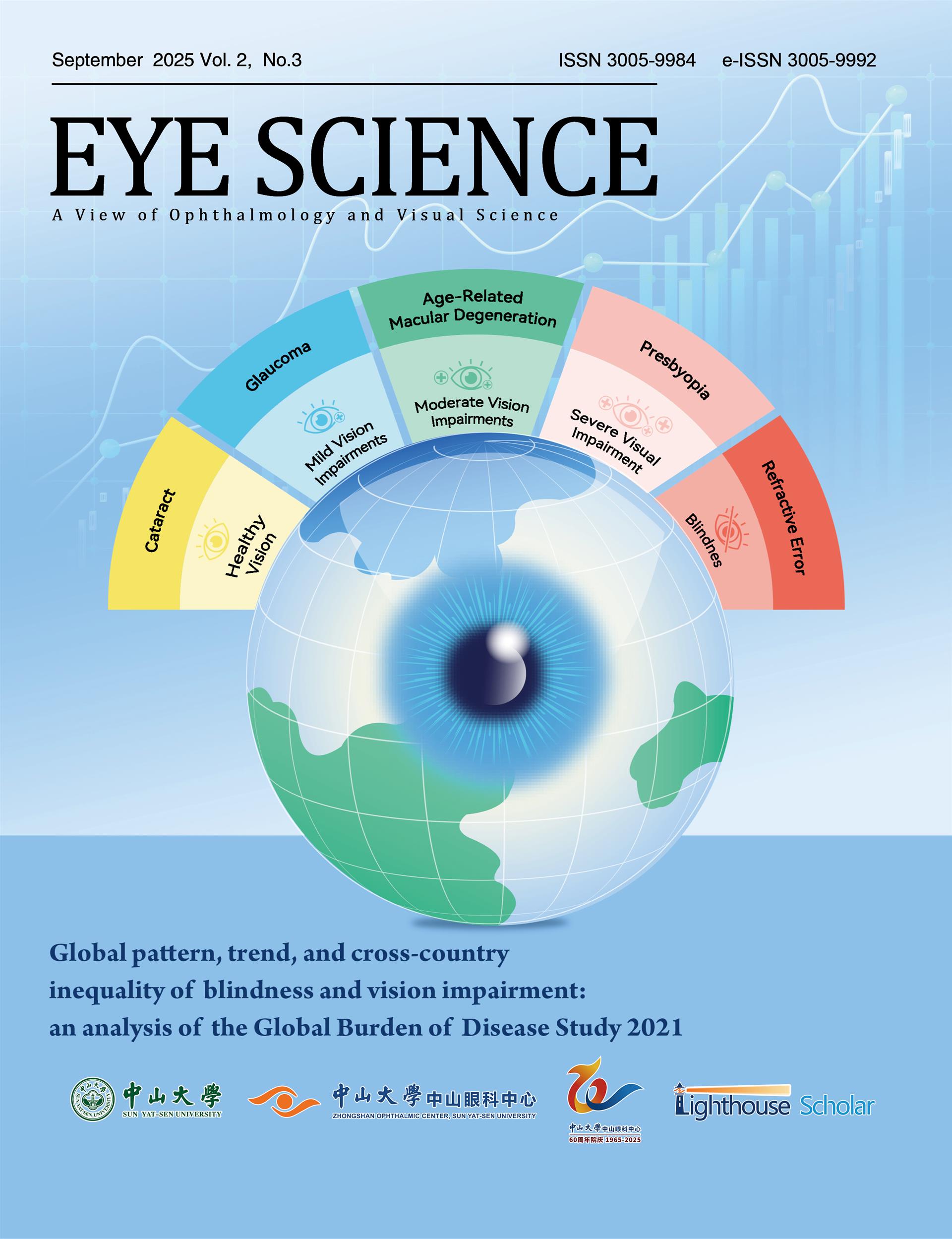1、 Verbeek S, Dalvin LA. Advances in multimodal imaging for diagnosis of pigmented ocular fundus lesions. Can J Ophthalmol. 2024, 59(4): 218-233. DOI:10.1016/j.jcjo.2023.07.005. Verbeek S, Dalvin LA. Advances in multimodal imaging for diagnosis of pigmented ocular fundus lesions. Can J Ophthalmol. 2024, 59(4): 218-233. DOI:10.1016/j.jcjo.2023.07.005.
2、Augsburger%20JJ%2C%20Trichopoulos%20N%2C%20Corr%C3%AAa%20ZM%2C%20et%20al.%20Isolated%20choroidal%20melanocytosis%3A%20a%20distinct%20clinical%20entity%3F%5BJ%5D.%20Graefe%E2%80%99s%20Arch%20Clin%20Exp%20Ophthalmol.%202006%2C%20244(11)%3A%201522-1527.%20DOI%3A10.1007%2Fs00417-006-0276-8.%20Augsburger%20JJ%2C%20Trichopoulos%20N%2C%20Corr%C3%AAa%20ZM%2C%20et%20al.%20Isolated%20choroidal%20melanocytosis%3A%20a%20distinct%20clinical%20entity%3F%5BJ%5D.%20Graefe%E2%80%99s%20Arch%20Clin%20Exp%20Ophthalmol.%202006%2C%20244(11)%3A%201522-1527.%20DOI%3A10.1007%2Fs00417-006-0276-8.%20
3、Shields CL, Qureshi A, Mashayekhi A, et al. Sector (partial) oculo(dermal) melanocytosis in 89 eyes. Ophthalmology. 2011, 118(12): 2474-2479. DOI:10.1016/j.ophtha.2011.05.023. Shields CL, Qureshi A, Mashayekhi A, et al. Sector (partial) oculo(dermal) melanocytosis in 89 eyes. Ophthalmology. 2011, 118(12): 2474-2479. DOI:10.1016/j.ophtha.2011.05.023.
4、Augsburger JJ, Brooks CC, Correa ZM. Isolated choroidal melanocytosis: clinical update on 37 cases. Graefes Arch Clin Exp Ophthalmol. 2020, 258(12): 2819-2829. DOI:10.1007/s00417-020-04919-x. Augsburger JJ, Brooks CC, Correa ZM. Isolated choroidal melanocytosis: clinical update on 37 cases. Graefes Arch Clin Exp Ophthalmol. 2020, 258(12): 2819-2829. DOI:10.1007/s00417-020-04919-x.
5、Martin P, Yang J, Khurshid G. Bilateral benign isolated choroidal melanocytosis. Can J Ophthalmol. 2022, 57(6): e196. DOI:10.1016/j.jcjo.2022.02.005. Martin P, Yang J, Khurshid G. Bilateral benign isolated choroidal melanocytosis. Can J Ophthalmol. 2022, 57(6): e196. DOI:10.1016/j.jcjo.2022.02.005.
6、Catapano TM, Bansal R, Shields CL. Multifocal choroidal melanoma in sector melanocytosis on autofluorescence. Ophthalmol Retina. 2024, 8(12): e50. DOI:10.1016/j.oret.2024.05.006. Catapano TM, Bansal R, Shields CL. Multifocal choroidal melanoma in sector melanocytosis on autofluorescence. Ophthalmol Retina. 2024, 8(12): e50. DOI:10.1016/j.oret.2024.05.006.
7、Angelidis CD, Petrou P, Kandarakis SA, et al. Simultaneous bilateral primary choroidal melanoma linked to bilateral ocular melanocytosis: a rare case study. Am J Case Rep. 2024, 25: e946129. DOI:10.12659/AJCR.946129. Angelidis CD, Petrou P, Kandarakis SA, et al. Simultaneous bilateral primary choroidal melanoma linked to bilateral ocular melanocytosis: a rare case study. Am J Case Rep. 2024, 25: e946129. DOI:10.12659/AJCR.946129.
8、Di Nicola M, Ebert JJ, Hagen MC, et al. Unilateral multifocal choroidal melanoma with underlying isolated choroidal melanocytosis. Ocul Oncol Pathol. 2022, 8(2): 100-104. DOI:10.1159/000522262. Di Nicola M, Ebert JJ, Hagen MC, et al. Unilateral multifocal choroidal melanoma with underlying isolated choroidal melanocytosis. Ocul Oncol Pathol. 2022, 8(2): 100-104. DOI:10.1159/000522262.
9、Singh AD, De Potter P, Fijal BA, et al. Lifetime prevalence of uveal melanoma in white patients with oculo(dermal) melanocytosis. Ophthalmology. 1998, 105(1): 195-198. DOI:10.1016/s0161-6420(98)92205-9. Singh AD, De Potter P, Fijal BA, et al. Lifetime prevalence of uveal melanoma in white patients with oculo(dermal) melanocytosis. Ophthalmology. 1998, 105(1): 195-198. DOI:10.1016/s0161-6420(98)92205-9.
10、 Heinze KD, Demirci H, Elner VM. Bilateral annular isolated choroidal melanocytosis. Ophthalmic Surg Lasers Imaging Retina. 2019, 50(3): e74-e76. DOI:10.3928/23258160-20190301-15. Heinze KD, Demirci H, Elner VM. Bilateral annular isolated choroidal melanocytosis. Ophthalmic Surg Lasers Imaging Retina. 2019, 50(3): e74-e76. DOI:10.3928/23258160-20190301-15.
11、Amador-Patarroyo MJ, Ahmed E, Chao DL. Bilateral choroidal melanocytosis. Ophthalmology. 2019, 126(2): 220. DOI:10.1016/j.ophtha.2018.12.006. Amador-Patarroyo MJ, Ahmed E, Chao DL. Bilateral choroidal melanocytosis. Ophthalmology. 2019, 126(2): 220. DOI:10.1016/j.ophtha.2018.12.006.
12、Velazquez-Martin JP, Krema H, Gottlieb CC, et al. Bilateral multifocal choroidal melanosis: a report of two cases. Ophthalmic Surg Lasers Imaging Retina. 2013, 44(2): 193-195. DOI:10.3928/23258160-20130130-03. Velazquez-Martin JP, Krema H, Gottlieb CC, et al. Bilateral multifocal choroidal melanosis: a report of two cases. Ophthalmic Surg Lasers Imaging Retina. 2013, 44(2): 193-195. DOI:10.3928/23258160-20130130-03.
13、Kovoor TA, Bahl D, Singh AD, et al. Bilateral isolated choroidal melanocytosis. Br J Ophthalmol. 2008, 92(7): 892, 1008. DOI:10.1136/bjo.2008.138495.Kovoor TA, Bahl D, Singh AD, et al. Bilateral isolated choroidal melanocytosis. Br J Ophthalmol. 2008, 92(7): 892, 1008. DOI:10.1136/bjo.2008.138495.
14、 Fine HF, Brue C, Eandi C, et al. Bilateral isolated choroidal melanocytosis. Retin Cases Brief Rep. 2009, 3(3): 272-274. DOI:10.1097/ICB.0b013e3181737718. Fine HF, Brue C, Eandi C, et al. Bilateral isolated choroidal melanocytosis. Retin Cases Brief Rep. 2009, 3(3): 272-274. DOI:10.1097/ICB.0b013e3181737718.
15、 Chheda P, Ramamurthy S, Raval V, et al. Oculodermal melanocytosis in Asian Indian patients: Prevalence, clinical presentation, and association with choroidal melanoma. Indian J Ophthalmol. 2025, 73(Suppl 1): S88-S94. DOI:10.4103/IJO.IJO_1445_24. Chheda P, Ramamurthy S, Raval V, et al. Oculodermal melanocytosis in Asian Indian patients: Prevalence, clinical presentation, and association with choroidal melanoma. Indian J Ophthalmol. 2025, 73(Suppl 1): S88-S94. DOI:10.4103/IJO.IJO_1445_24.
16、Lee JK, Kim YC. Bilateral isolated choroidal melanocytosis with hypopigmented posterior pole. Indian J Ophthalmol. 2020, 68(11): 2507-2509. DOI:10.4103/ijo.IJO_1731_20. Lee JK, Kim YC. Bilateral isolated choroidal melanocytosis with hypopigmented posterior pole. Indian J Ophthalmol. 2020, 68(11): 2507-2509. DOI:10.4103/ijo.IJO_1731_20.
17、Pellegrini M, Shields CL, Arepalli S, et al. Choroidal melanocytosis evaluation with enhanced depth imaging optical coherence tomography. Ophthalmology. 2014, 121(1): 257-261. DOI:10.1016/j.ophtha.2013.08.030.Pellegrini M, Shields CL, Arepalli S, et al. Choroidal melanocytosis evaluation with enhanced depth imaging optical coherence tomography. Ophthalmology. 2014, 121(1): 257-261. DOI:10.1016/j.ophtha.2013.08.030.
18、Shields CL, Manalac J, Das C, et al. Choroidal melanoma: clinical features, classification, and top 10 pseudomelanomas. Curr Opin Ophthalmol. 2014, 25(3): 177-185. DOI:10.1097/ICU.0000000000000041. Shields CL, Manalac J, Das C, et al. Choroidal melanoma: clinical features, classification, and top 10 pseudomelanomas. Curr Opin Ophthalmol. 2014, 25(3): 177-185. DOI:10.1097/ICU.0000000000000041.
19、 Ghassemi F, Ebrahimiadib N, Riazi-Esfahani H, et al. A solitary choroidal mass with spontaneous resolution. Case Rep Ophthalmol Med. 2020, 2020: 8882617. DOI:10.1155/2020/8882617. Ghassemi F, Ebrahimiadib N, Riazi-Esfahani H, et al. A solitary choroidal mass with spontaneous resolution. Case Rep Ophthalmol Med. 2020, 2020: 8882617. DOI:10.1155/2020/8882617.
20、Wang H, Ly A, Yapp M, et al. Multimodal imaging characteristics of congenital grouped hyper- and hypo-pigmented fundus lesions. Clin Exp Optom. 2020, 103(5): 641-647. DOI:10.1111/cxo.12984. Wang H, Ly A, Yapp M, et al. Multimodal imaging characteristics of congenital grouped hyper- and hypo-pigmented fundus lesions. Clin Exp Optom. 2020, 103(5): 641-647. DOI:10.1111/cxo.12984.
21、Fallon SJ, Shields CN, Di Nicola M. Trifocal choroidal melanoma in an eye with oculodermal melanocytosis: a case report. Indian J Ophthalmol. 2019, 67(12): 2092-2094. DOI:10.4103/ijo.IJO_493_19. Fallon SJ, Shields CN, Di Nicola M. Trifocal choroidal melanoma in an eye with oculodermal melanocytosis: a case report. Indian J Ophthalmol. 2019, 67(12): 2092-2094. DOI:10.4103/ijo.IJO_493_19.
22、Canestraro J, Jaben KA, Wolchok JD, et al. Progressive choroidal thinning (leptochoroid) and fundus depigmentation associated with checkpoint inhibitors. Am J Ophthalmol Case Rep. 2020, 19: 100799. DOI:10.1016/j.ajoc.2020.100799. Canestraro J, Jaben KA, Wolchok JD, et al. Progressive choroidal thinning (leptochoroid) and fundus depigmentation associated with checkpoint inhibitors. Am J Ophthalmol Case Rep. 2020, 19: 100799. DOI:10.1016/j.ajoc.2020.100799.
23、 Li HK, Shields CL, Mashayekhi A, et al. Giant choroidal nevus. Ophthalmology. 2010, 117(2): 324-333. DOI:10.1016/j.ophtha.2009.07.006. Li HK, Shields CL, Mashayekhi A, et al. Giant choroidal nevus. Ophthalmology. 2010, 117(2): 324-333. DOI:10.1016/j.ophtha.2009.07.006.
24、Augsburger%20JJ.%20Focal%20aggregates%20of%20normal%20or%20near%20normal%20uveal%20melanocytes%20(FANNUMs)%20in%20the%20choroid%3A%20a%20distinct%20clinical%20and%20histopathological%20entity%3F.%20Graefe%E2%80%99s%20Arch%20Clin%20Exp%20Ophthalmol.%202021%2C%20259(1)%3A%20191-196.%20DOI%3A10.1007%2Fs00417-020-04851-0.%20Augsburger%20JJ.%20Focal%20aggregates%20of%20normal%20or%20near%20normal%20uveal%20melanocytes%20(FANNUMs)%20in%20the%20choroid%3A%20a%20distinct%20clinical%20and%20histopathological%20entity%3F.%20Graefe%E2%80%99s%20Arch%20Clin%20Exp%20Ophthalmol.%202021%2C%20259(1)%3A%20191-196.%20DOI%3A10.1007%2Fs00417-020-04851-0.%20
25、 Singh AD, Kalyani P, Topham A. Estimating the risk of malignant transformation of a choroidal nevus. Ophthalmology. 2005, 112(10): 1784-1789. DOI:10.1016/j.ophtha.2005.06.011. Singh AD, Kalyani P, Topham A. Estimating the risk of malignant transformation of a choroidal nevus. Ophthalmology. 2005, 112(10): 1784-1789. DOI:10.1016/j.ophtha.2005.06.011.
26、Shields CL, Dalvin LA, Ancona-Lezama D, et al. Choroidal nevus imaging features in 3, 806 cases and risk factors for transformation into melanoma in 2, 355 cases: The 2020 Taylor r. Smith and Victor t. Curtin Lecture. Retina. 2019, 39(10): 1840-1851. DOI:10.1097/iae.0000000000002440. Shields CL, Dalvin LA, Ancona-Lezama D, et al. Choroidal nevus imaging features in 3, 806 cases and risk factors for transformation into melanoma in 2, 355 cases: The 2020 Taylor r. Smith and Victor t. Curtin Lecture. Retina. 2019, 39(10): 1840-1851. DOI:10.1097/iae.0000000000002440.
27、 Dalvin LA, Shields CL, Ancona-Lezama DA, et al. Combination of multimodal imaging features predictive of choroidal nevus transformation into melanoma. Br J Ophthalmol. 2019, 103(10): 1441-1447. DOI:10.1136/bjophthalmol-2018-312967. Dalvin LA, Shields CL, Ancona-Lezama DA, et al. Combination of multimodal imaging features predictive of choroidal nevus transformation into melanoma. Br J Ophthalmol. 2019, 103(10): 1441-1447. DOI:10.1136/bjophthalmol-2018-312967.
28、Shields JA, Shields CL. Tumors and related lesions of the pigmented epithelium. Asia Pac J Ophthalmol. 2017, 6(2): 215-223. DOI:10.22608/APO.201705. Shields JA, Shields CL. Tumors and related lesions of the pigmented epithelium. Asia Pac J Ophthalmol. 2017, 6(2): 215-223. DOI:10.22608/APO.201705.
29、Arepalli S, Pellegrini M, Ferenczy SR, et al. Combined hamartoma of the retina and retinal pigment epithelium: findings on enhanced depth imaging optical coherence tomography in eight eyes. Retina. 2014, 34(11): 2202-2207. DOI:10.1097/IAE.0000000000000220. Arepalli S, Pellegrini M, Ferenczy SR, et al. Combined hamartoma of the retina and retinal pigment epithelium: findings on enhanced depth imaging optical coherence tomography in eight eyes. Retina. 2014, 34(11): 2202-2207. DOI:10.1097/IAE.0000000000000220.
30、Singh AD, Raval V, Bellerive C, et al. Choroidal melanocytic lesions in children: focal aggregates and melanocytosis. J Am Assoc Pediatr Ophthalmol Strabismus. 2021, 25(6): 327.e1-327.e5. DOI:10.1016/j.jaapos.2021.07.009.
Singh AD, Raval V, Bellerive C, et al. Choroidal melanocytic lesions in children: focal aggregates and melanocytosis. J Am Assoc Pediatr Ophthalmol Strabismus. 2021, 25(6): 327.e1-327.e5. DOI:10.1016/j.jaapos.2021.07.009.
31、Hrynchak P, Hugh J, Labreche T. Bilateral isolated choroidal
melanocytosis with isoautofluorescence. CanJOphthalmol. 2018,
53(3):e97-e99. DOI: 10.1016/j.jcjo.2017.09.008. Hrynchak P, Hugh J, Labreche T. Bilateral isolated choroidal
melanocytosis with isoautofluorescence. CanJOphthalmol. 2018,
53(3):e97-e99. DOI: 10.1016/j.jcjo.2017.09.008.
32、Mason LB, MasonJO. Bilateral isolated choroidal
melanocytosis. Retin Cases Brief Rep. 2016, 10(2): 112-114. DOI
: 10.1097/icb.0000000000000178Mason LB, MasonJO. Bilateral isolated choroidal
melanocytosis. Retin Cases Brief Rep. 2016, 10(2): 112-114. DOI
: 10.1097/icb.0000000000000178



























